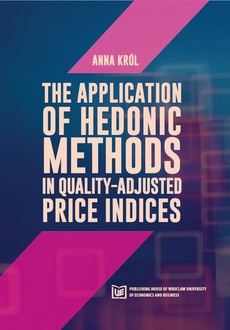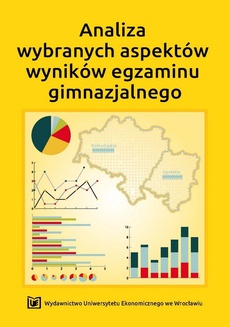INNE EBOOKI AUTORA

The application of hedonic methods in quality-adjusted price indices
Autor:
Format:
ibuk
The measurement of price dynamics is by no means new endeavour in the official statistics but the process of establishing accurate price changes in time still remains challenging in many areas. One such demanding field is the application of appropriate techniques in price index development for providing amendments reflecting quality differences which might occur in the compared commodities. Implementing adjustments in price indices has been discussed in most cases in relation to Consumer Price Index (CPI). In Poland, this index is considered to be the most important price change measure, mainly due to legal and economic implications. The CPI constitutes the basis for numerous indicators in Polish legal acts, among others it influences valorisation of social security benefits (e.g. unemployment allowance), capital indexation (e.g. bonds interest rates) or the level of state and municipal taxes and fees (e.g., real estate tax rates). The economic implications of CPI indicator are reflected by its importance in the decisions of The Monetary Policy Council in determining the fiscal policy of the State, in government budget construction, or in setting the level of interest rates. In periods when the main objective of monetary policy of the State is to achieve appointed level of inflation, the Consumer Price Index indirectly influences other economic processes such as the money supply, exchange rates or employment level. Thus, the correct measure of price change is fundamental to the monetary and fiscal policy of the State. Providing price index adjustments for quality changes is no less important in the context of branch price indices, especially on the real estate markets. The real estate sector plays a very important role in the economy, in particular taking into account its share in GDP, absorption of the labour force, as well as the growing role and financial involvement of the banking sector in its crediting. Therefore, the demand for reliable and up-to-date price dynamics analyses of real estate markets remains high.
| Rok wydania | 2020 |
|---|---|
| Liczba stron | 132 |
| Kategoria | Zarządzanie, organizacja, strategie |
| Wydawca | Wydawnictwo Uniwersytetu Ekonomicznego we Wrocławiu |
| ISBN-13 | 978-83-7695-790-6 |
| Numer wydania | 1 |
| Język publikacji | angielski |
| Informacja o sprzedawcy | ePWN sp. z o.o. |
POLECAMY
Ciekawe propozycje
Spis treści
| Preface | 7 |
| 1. Hedonic price methods | 9 |
| 1.1. Introduction | 9 |
| 1.2. Hedonic model and its applications | 10 |
| 1.3. Research motivation | 12 |
| 1.4. Hedonic price indices | 13 |
| 1.5. The infrastructure for data collection | 19 |
| 1.6. Data sets | 24 |
| 1.7. Methodological notes | 25 |
| 2. Hedonic indices on ICT/IT goods and consumer electronics markets 30 | |
| 2.1. Introduction | 30 |
| 2.2. Preliminary commodities selection | 30 |
| 2.3. Hedonic indices for TV sets | 40 |
| 2.4. Hedonic indices for laptop computers | 47 |
| 2.5. Hedonic indices for smartphones | 54 |
| 3. Hedonic indices on household appliances markets 62 | |
| 3.1. Introduction | 62 |
| 3.2. Preliminary commodities selection | 62 |
| 3.3. Hedonic indices for coffee makers | 68 |
| 3.4. Hedonic indices for refrigerators | 74 |
| 4. Hedonic indices on secondary apartments markets | 79 |
| 4.1. Introduction | 79 |
| 4.2. Datasets | 79 |
| 4.3. Hedonic price indices for apartments in Kraków | 80 |
| 4.4. Comparison of hedonic indices for apartments in Polish cities | 84 |
| 5. Hedonic indices on used cars markets | 86 |
| 5.1. Introduction | 86 |
| 5.2. Datasets | 87 |
| 5.3. Hedonic price indices for used hatchback cars | 88 |
| 5.4. Comparison of hedonic indices for various types of used automobiles | 92 |
| Final notes | 94 |
| Appendices | 97 |
| References | 123 |
| List of figures | 129 |
| List of tables | 131 |






































